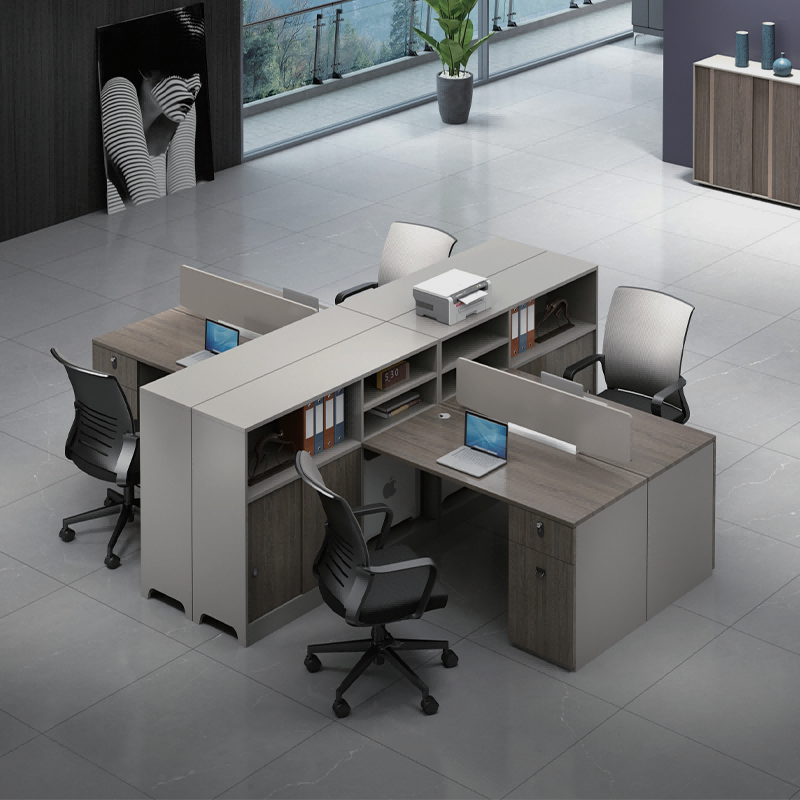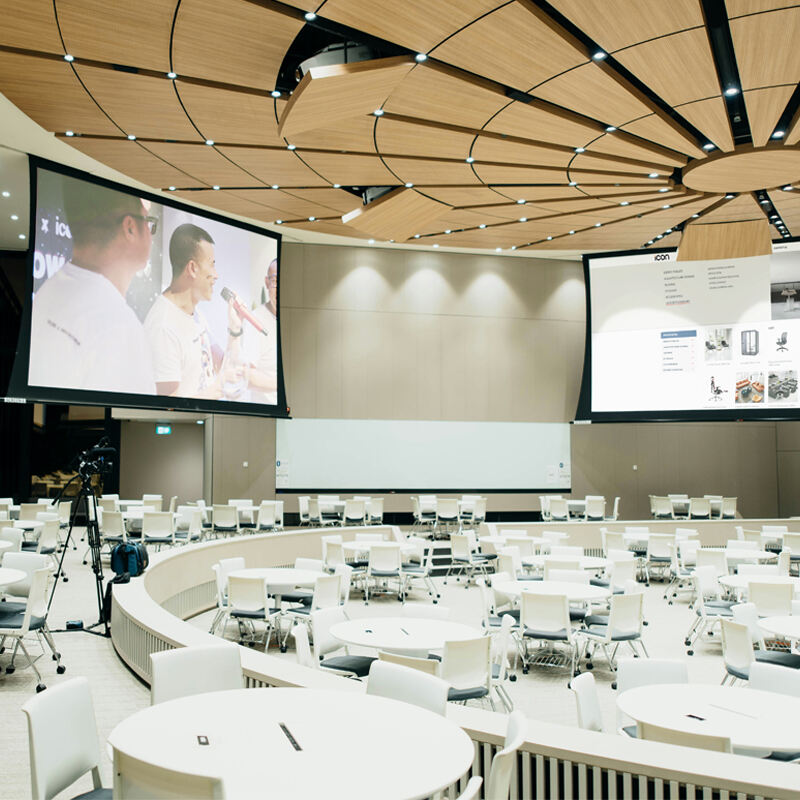Why Adjustable Desks Are Revolutionizing Modern Workspaces
The rise of flexible work environments has significantly influenced how modern workspaces are designed. Traditional rigid office structures are being replaced by adaptable setups that cater to diverse employee needs and preferences. Adjustable desks are at the heart of this transformation, allowing individuals to tailor their workspace to enhance comfort and productivity. Flexible work environments are more critical today as businesses strive to adapt to changing workforce dynamics and promote employee wellness.
Adjustable desks promote adaptability and cater to a variety of work styles, making them a key component in modern workspaces. These desks offer the flexibility to alternate between sitting and standing positions, accommodating a range of employee preferences. By facilitating these transitions, adjustable desks not only aid in alleviating health concerns linked with prolonged sitting but also enhance concentration and employee engagement. They are an essential tool in fostering productive and ergonomic work environments.
Many organizations are integrating adjustable desks to boost employee satisfaction and productivity. Companies have realized that employee well-being directly correlates with output and job satisfaction, leading to the widespread adoption of height-adjustable desks. These desks empower employees to control their work environment, promoting movement and reducing the health risks associated with static postures. This integration of adjustable desks symbolizes an investment in the workforce's holistic wellness, which is crucial for long-term business success.
5 Key Health Benefits of Adjustable Desks
Height-adjustable desks are revolutionizing the workspace due to their numerous health benefits. They offer a dynamic solution to common office health issues, making them an essential addition to any work environment. Here, we explore the key health advantages these desks provide.
Reducing Sedentary Behavior with Sit-Stand Flexibility
Sedentary behavior is a major health concern linked to various ailments, including chronic back pain, diabetes, and cardiovascular disease. Adjustable desks mitigate these risks by promoting sit-stand flexibility, encouraging movement throughout the day. Studies show that regular transitions between sitting and standing can lead to improved health outcomes. This dual-mode operation reduces sitting time, a significant contributor to such health conditions, thereby offering a practical solution to enhance overall well-being in the workplace.
Improving Posture and Alleviating Chronic Back Pain
Improper posture, often resulting from extended periods of sitting, is a common precursor to work-related injuries and chronic back pain. With adjustable desks, users can easily modify desk heights, facilitating optimal ergonomic alignment. Research indicates that such customization can significantly reduce discomfort, helping users maintain better posture. These desks allow the adjustment of monitor and keyboard heights, ensuring that the workspace fits the user's natural alignment, thus minimizing strain and preventing long-term musculoskeletal issues.
Enhancing Circulation and Boosting Energy Levels
Prolonged sitting can impede blood circulation, leading to fatigue and diminished energy levels over time. Adjustable desks enable users to alternate between standing and sitting, promoting improved blood flow and energy throughout the day. Incorporating short standing intervals into daily routines can invigorate employees, reduce the feeling of sluggishness, and enhance workplace productivity. Such dynamic engagement with the workspace not only counters the physical lethargy of prolonged sitting but also fosters a more energetic and alert working environment.
Combating Weight Gain and Metabolic Risks
A sedentary lifestyle is a recognized contributor to metabolic syndrome and related weight issues. Alternating between sitting and standing at an adjustable desk can increase daily caloric expenditure, assisting in weight management. According to health organizations, infusing movement into work routines can mitigate these metabolic risks. By integrating adjustable desks into the workspace, employees can subtly incorporate physical activity into their daily schedules, promoting healthier metabolic rates and aiding in weight stabilization without interrupting workflow.
Supporting Mental Focus and Productivity
Physical comfort plays a vital role in enhancing mental focus and overall workplace productivity. Studies highlight that ergonomic solutions, such as adjustable desks, allow for a more mentally engaging work experience by reducing discomfort and fostering a conducive work environment. Configuring workspaces for ergonomic efficiency can significantly enhance concentration, enabling employees to maintain better focus and produce higher quality work. By offering flexibility and comfort, height-adjustable desks serve as a foundation for a more attentive and dynamically productive workday.
Smart Features Elevating Adjustable Desk Functionality
Programmable Height Presets for Personalized Comfort
Programmable height presets are transforming the way users experience adjustable desks, offering unparalleled personalized comfort. These features allow users to store multiple height preferences, accommodating varied working postures throughout the day. With a simple push of a button, individuals can switch from sitting to standing seamlessly, which is fundamental for maintaining an ergonomic workstation. For example, desks equipped with advanced technology incorporate memory settings that cater to the needs of multiple users, enhancing usability in shared environments. Such innovations exemplify the evolving landscape of OFFICE FURNITURE technology, ensuring tailor-made comfort for each user.
Built-In Activity Reminders for Movement Breaks
Built-in activity reminders incorporated into adjustable desks are an essential feature for promoting regular movement during the workday. Research underscores the importance of periodic breaks to enhance both physical and mental well-being. These desks employ integrated applications that prompt users to take movement breaks, ensuring sustained activity levels. Some advanced models even vibrate or light up at set intervals to encourage user engagement. These health-centered features make it easier for individuals to maintain energy levels and focus, ultimately fostering a healthier and more productive work environment.
Wireless Charging and Streamlined Cable Management
Wireless charging and streamlined cable management are revolutionizing modern workspaces, contributing to workspace efficiency. By integrating wireless charging capabilities into desk surfaces, users can charge their devices effortlessly without cluttering the workspace with cords. This seamless feature not only exemplifies an organized approach but also aligns with the growing demand for technology-friendly office environments. Additionally, cable management solutions minimize tangled cords, creating a more aesthetically pleasing and functional workstation. Together, these tech enhancements serve to optimize not only the visual appeal but also the usability of contemporary desks.
Ergonomic Design Principles for Optimal Performance
Spacious, Clutter-Free Work Surfaces
A spacious and clutter-free work surface is crucial for enhancing productivity and focus in any office environment. Ample desk space allows easy access to tools and documents, thereby reducing stress and distractions. To achieve this, consider organizing your workspace efficiently by decluttering personal items and using cable management systems to keep cords tidy. Arrange essential items within arm's reach and utilize vertical space by adding shelves or organizers built into the desk.
Stable, Wobble-Free Construction for Precision Work
Ensuring stable, wobble-free construction is vital for precision work and maintaining focus. High-quality materials such as solid metals or engineered wood are often used in the design of modern desks to minimize wobbling during intense tasks. According to studies, stable workstations can significantly improve concentration as workers are less likely to be distracted by unnecessary movements. When choosing a desk, consider those constructed with reinforced support frames and durable materials to enhance stability.
Eco-Friendly Materials for Sustainable Workspaces
Using eco-friendly materials for desk production not only benefits the planet but also aligns with growing consumer preferences for sustainable PRODUCTS. Materials such as bamboo, reclaimed wood, and recycled metals are popular choices for sustainable workspaces. Current data indicates a significant rise in demand for eco-friendly office furniture, with consumers increasingly valuing the environmental impact of their purchases. Opting for sustainable desk options can also enhance your organization’s green credentials and appeal to environmentally-conscious employees.
Synergy with Custom Office Chairs (LSI Integration)
Pairing desks with custom office chairs can create an ergonomic synergy that boosts comfort and efficiency. Custom office chairs often come with features like height adjustment, lumbar support, and personalization options, which complement adjustable desks. For example, using personalized office chairs alongside a height-adjustable desk allows users to tailor their workspace according to their ergonomic needs, thus enhancing office design and user experience. This synergy not only improves posture and reduces discomfort but also fosters a more productive work environment.
Future Trends in Adjustable Desk Technology
AI-Powered Posture Correction Systems
AI technology is revolutionizing ergonomic support by integrating smart features into adjustable desk systems. This advancement allows desks to offer personalized posture correction by analyzing user movements and positioning. As AI systems continue to evolve, future implementations may include real-time posture adjustments and recommendations tailored to individual needs, potentially reducing the risk of musculoskeletal issues. The fusion of AI with adjustable desks marks a leap toward enhancing worker health and productivity, enabling workplaces to become more responsive to the well-being of their employees.
Integrated Wellness Monitors for Health Metrics
Adjustable desks are increasingly being equipped with integrated wellness monitors, allowing users to track important health metrics while they work. These health-monitoring desks can provide data on sitting and standing durations, caloric expenditure, and even posture-related feedback, fostering engagement and awareness among users. Statistics indicate that users who engage with these features can experience notable improvements in health outcomes, including reduced sedentary behavior and enhanced physical activity levels. Presently, these innovative desks are paving the way for a healthier workspace as they seamlessly incorporate health awareness into daily routines.





